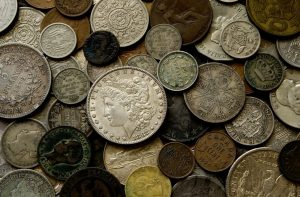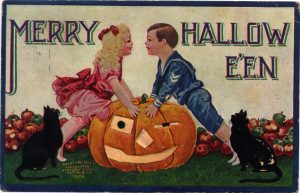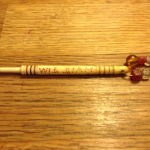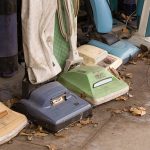The hobby of coin collecting has existed since at least the 12th century, and it remains a popular pastime for many people today. The practice of collecting rare and antique coins can also be a lucrative investment strategy. Still, the world of antique coin collecting can seem daunting to outsiders first stumbling into the space. Perhaps you have just inherited a large coin collection and are wondering how to determine its value, or maybe you have just been inspired to start your own coin collection. Either way, the Old & New Shop has compiled this guide to antique coins to help budding collectors and others new to the field understand antique coins.
Tips for Antique Coin Collecting
- “Buy the book before you buy the coin.” The saying is a popular adage in the numismatist (coin collector) community. The book in question is The Guide Book of United States Coins, also known as the Red Book. The book will share the basics of coin collecting and get novices ready to begin their coin-collecting journeys.
- Know the categories. There are several notable categories of coins sought after by collectors, including circulating coins, error coins, commemorative coins, bullion coins, ancient coins, proof coins, brilliant uncirculated coins, and foreign coins. Different collectors are drawn to different categories based on their interests, budgets, and collection themes.
- Pick a theme. Coin collecting is more fulfilling when you pick a specific theme. It’s best to go with an inexpensive and simple theme when you first start. Coin collecting themes involve focusing on a specific category or characteristic. For example, collecting a specific set of coins like US state quarters, a specific minting year, national origin, coins depicting a specific place or animal, a historical era, commemorative coins about a certain event, or anything else you can imagine.
- Store your coins safely. While we may typically think of objects like metal coins as durable, the surfaces of coins are actually very delicate and can be damaged easily by things like human contact, the weather, and even prolonged exposure to air. Store your coins in a safe coin tray, coin envelope, coin album, or cabinet.
- Handle them correctly and do not clean them. Collectors should only handle their coins along the edges, not on the face of the coin. Valuable coins should only be handled while wearing cotton or latex gloves. You should never clean your coins because this can lower their value and possibly even make your coins monetarily worthless.
- Engage with the antique coin collecting community. The best tip for getting into antique coin collecting is to engage with the numismatist community. Join a collecting club, attend coin collecting shows, or visit your nearest rare coin shop. Inhabit spaces where you can interact with and learn from other coin collectors. If you are serious about coin collecting, you should also build a relationship with a reputable coin dealer.
Valuable Coins To Look For While Antique Coin Collecting
- Saint-Gaudens Double Eagle: The Saint-Gaudens Double Eagle was a gold US coin minted between 1907 and 1933. It was once worth only $20, but examples of this coin minted in 1933 are valued at over $20 million. The coin was rapidly taken out of circulation in 1933 as part of a gold recall, which explains its rarity and high value.
- 1794 Flowing Hair Silver Dollar: The Flowing Hair Silver Dollar depicts a woman with flowing hair on one side and an eagle on the other. It was the first silver dollar coin minted in the US, minted between 1794 and 1795. Its value today can be up to $13 million.
- 1787 Brasher Doubloon: The first gold coin to be minted in the United States actually predates the establishment of the US Mint, and was instead created by George Washington’s neighbor, Ephraim Brasher. Only seven of these coins are known to have been produced, and only one of these coins bore the initials of its creator. That specific Brasher Doubloon is worth $10 million today.
- The 1343 Edward III Florin: The 1343 Edward III Florin is an English coin also known as the Double Leopard. Only three of these coins have ever been uncovered, two in 1857 and one in 2006. These coins are valued at almost $7 million.
- The 723 Umayyad Gold Dinar: The Umayyad gold dinar was minted in the year 723 AD by the Umayyad Caliphate. Only about a dozen of these 1,300-year-old coins are known to exist today, and they are each valued at over $5 million.
- 1913 Liberty Head V Nickel: According to the official records of the US Mint, these coins never existed, yet five specimens of this coin have nevertheless been discovered. The coin depicts Lady Liberty on one side and the Roman numeral ‘V’, for five cents, on the other. These rare nickels have a value of over $5 million.
- 1943 Lincoln Head Copper Penny: In 1943, during the height of WW2, most pennies were made of steel because copper was being redirected to the war effort. However, one batch of pennies was mistakenly minted with copper. About 40 of these pennies are known to have survived to the present and they can be worth between $100,000 and $500,000, with one unique specimen even selling for over $3 million.
- The 1787 Fugio Cent: The Fugio Cent may have been the first coin circulated in the US after the revolution, but this is disputed. The coin is named in honor of Benjamin Franklin. Rare variants of the Fugio Cent in pristine condition can be worth tens of thousands of dollars today, while others can be worth just hundreds.
Old & New Shop Can Help!
If you are looking to determine the value of your coin collection, liquidate your coin collection, or start your own antique coin collection, call the Old & New Shop for help!





